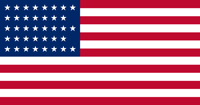What Is Paddle Boarding (And How to Get Started) | Maddle
Stand-up paddle boarding or SUP is a water sport in which you stand on an inflatable or solid board and use a paddle to move the board through the water. Paddle boards are similar to surfboards, but are more stable and typically longer than traditional surfboards.
In this article we’ll give you a bit of history about where this whole sport started, an equipment list so you can buy the right gear, and some paddling tips to give you confidence as you head out on the water for your first few paddles.
Paddle Board History
A paddle board, which you may also hear being referred to as SUP (stand-up paddle board), is thought to have been invented in Hawaii. The indigenous population used these as transportation to fishing spots and other islands as well as for recreational SUP surfing. The modern day version of the boards can be first attributed to the early 2000’s when surfers in California began using custom SUPs to surf waves. Fast forward to 2023 and the global paddle board industry is forecast at a market value of $4.3 billion.
Why is paddle boarding so popular?
Go to any lake, beach or calm bay on the ocean and there’s one thing you’ll notice. Everyone seems to have a paddle board—and for good reason! These boards can be enjoyed by people of all ages and fitness levels.
The reason this sport continues to grow is because it can be many things to many people. SUP boards are one of the most versatile watercrafts ever made. You can take them for a relaxing outing where enjoying the view on the water and getting your Vitamin D is the priority, or head to your local river and paddle down through the rapids. Paddle board surfing has become so popular that at most surf breaks around the world you will find more than a handful of SUP surfers out to catch waves with prone surfers.
Stand up paddle boards can also be a great platform for other activities, with some companies selling specific SUP yoga boards, fishing, or touring boards. And no matter which way you decide to use your SUP board, you can make it a full body workout just by paddling harder.
What equipment do I need to start paddle boarding?
Stand up paddle boarding is a relatively easy activity to get started. There are many options when it comes to the quality and price tag of the SUP boards, paddle board paddles and the safety equipment we recommend you have with you at all times while out on the water. But no matter what your budget or ways you want to use your stand up paddle board, there’s a SUP board for you.
Here’s a list of gear you need to get started with stand up paddle boarding:
Must have:
Paddle
Leash
PFD (Personal Floatation Device)
Manual or electric pump - if using an inflatable boards
Optional:
Sun protection
Dry bag with change of clothes and/or towel
First Aid Kit
Sunglasses and a sunhat
Repair kit if going on a longer paddle
Wetsuit

How to start paddle boarding?
The first thing you need to start paddle boarding is a board and a paddle. Other items such as a leash, bag and Personal Flotation Device or lifejacket are also recommended.
Paddle Boards
Stand up paddle boards come in a variety of materials and lengths, so if you’re wondering what size paddle board you should get, your best option is to start out with an inflatable board that’s between 10 and 11 feet long and wide and thick enough to give you good stability.
Another decision you will need to make is whether to go for an inflatable SUP or hard board. While each has its pros and cons, inflatables are easy to store and transport, more comfortable for your feet and knees when paddling or doing SUP yoga, lighter to carry and easier to repair if punctured.
SUP Paddles
Purchasing a SUP paddle can be daunting as there are many different types of paddle shafts and sizes of the paddle blade, as well as different lengths. SUP paddles are longer than a canoe paddle and can be adjustable paddle, so they can be used by people of varying heights. It’s also key to have a paddle shaft that is made of lightweight, aluminum with a nylon blade for durability. Carbon fiber paddles are also available but come at a much higher cost. Maddle includes a paddle with the board so you don’t need to purchase separately.
How to paddle board
Before you head out on the water with your new paddle board, you should pump up the board at home and get familiar with your equipment. Consider practicing how to hold the paddle board paddle at home. Jump on a chair, placing one hand on the shaft and the other on the handle. Practice some forward strokes with a slight bend in your knees.
The first few times you stand on your paddle board, you may feel like a fish out of water. It feels tippy, your paddling technique will feel inefficient and if you aren’t starting in calm water, you may fall off and get wet. But never fear, here are some beginner paddlers tips for how to paddle board.
Pump up your board if using inflatable SUPs.
Put on your PFD and attach a SUP leash to your ankle.
Grab the center grab handle and slowly raise the board off the ground.
Grab your paddle.
Head to the water and once in knee deep water, climb onto the board by kneeling on the traction pad.
Holding the paddle perpendicular to the water, place the blade ahead of you on the side of the board and perform a forward stroke.
Once you’re able to go in a straight line, try a reverse stroke.
Once you feel you can paddle properly on flat water and move the board forward, now you can put the ‘stand’ in “stand up paddle”.
Put one foot on the board and keep one knee on the pad. Once you feel stable, try and stand up fully.
Now, place your paddle’s blade in the water. Adjust the paddle length accordingly. The top of the handle should reach your forehead.
With your knees slightly bent, bend at the waist and reach forward trying to get maximum reach without feeling unstable.
When doing a forward stroke, don’t paddle past your heels as it’s inefficient.
Switch sides occasionally to stay in a straight line.
We provide more tips for learning how to stand up paddle board to improve your technique.
What are the benefits of paddle boarding?
Not only is stand up paddle boarding just plain fun, it has a ton of benefits that paddle boarders around the world know and love.
The best reason to go paddle boarding is because it promotes a healthy and active lifestyle that gets you outside in the great outdoors. It builds muscular strength and endurance, can help you lose weight, calms your nerves, puts you in a good mood, and so much more.
Here are a few more benefits of stand up paddle boarding:
Great workout
If you want a great workout, go paddling! Paddle boarding uses all your major muscle groups, improves your cardiovascular health and helps you lose weight. Depending on your fitness level, you can even do sprint sessions to really challenge yourself.

Improves mood
It’s been proven that exercise and nature improve your mood and elevate your mental health. With paddle boarding, you get the best of both worlds. It’s hard not to have a smile on your face when you’re paddling and this feeling lasts well after you get out of the water.
Enjoy nature
Since paddle boarding is done in the great outdoors, it’s the perfect way to take in all that Mother Nature has to offer. You’ll gain new vantage points and take in the beauty from different perspectives than you’d get from land.
Meet new people
The paddling community is large and it’s full of friendly nature lovers. Whether you meet people in the parking lot, on the beach, at the dock, or on the water, having a paddle board is a great way to strike up a conversation.
There are many more benefits of stand up paddle boarding making it a fantastic activity for anyone.
Safety considerations when paddle boarding
Depending on the type of stand up paddle boarding you’re doing as well as your destination, it’s important to think about the safety considerations, especially when paddle boarding alone.
Along with bringing the right gear and having the right board (such as a longer touring board for a multi-day trip), having a trip plan and communicating that plan with friends or family, ensures that if anything goes wrong people will know where they can find you.
Always check the weather before heading out. Check the wind forecast to see if there are any storms predicted in your area that could make waves or create lighting. If it’s looking windy and you still want to head out, get your full body workout at the start of your journey by heading into the wind so that when you are tired you can turn the board around and not need to battle to get back to your starting point.
Is paddle boarding difficult?
Stand up paddle boarding can be as easy or as difficult as you make it. Some people find it relatively easy to get the hang of, while others may struggle at first. It can be helpful to start in calm, shallow water, where you can get comfortable with the feeling of standing on the board and using the paddle. As you gain confidence and skill, you can try paddling in more challenging conditions such as choppy water or catching waves. To catch waves you can use an all around board on the open ocean but having one for both surfing and flat water is better.
Are Maddle Boards hard to paddle?
No, they aren’t. We’ve made our boards to be one of the best all around boards on the market at an affordable price. When you’re stand up paddle boarding, you can feel confident no matter how or where you decide to paddle—whether you’re a beginner or expert.
Our 10’6 inflatable boards are built with high performance durability in mind. We include a bag, pump, leash and repair kit with all our inflatable stand up paddle boards. We sell directly to you and deliver right to your door in Canada and the US.
 $USD
$USD $CAD
$CAD €EUR
€EUR


